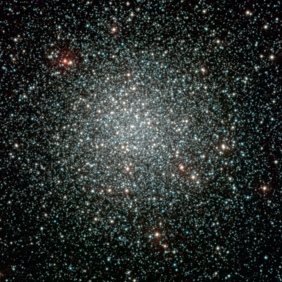According to Dr Manuel Arca Sedda, Astronomer at the Center for Astronomy of Heidelberg University (ZAH/ARI), mergers involving a black hole and a neutron star pairing in crowded stellar environments seem to have unique peculiarities compared to those forming in isolation. These features can be crucial to distinguish gravitational wave sources originating from different channels and could be readily applicable to data already recorded by gravitational wave detectors. Results of his research have now been published in Communications Physics, an open access journal from Nature Research.
The life of stars much more massive than our Sun could end in the formation of a neutron star or black hole. While neutron stars have been observed thanks to their precise pulses of radiation, black holes remained an unsolved riddle because their gravitational attraction is so strong that even light cannot escape their surface, making them invisible to electromagnetic detectors.
If two black holes revolve around each other they loose orbital energy in the form of gravitational waves (GWs). These "ripples of the space-time" travel across the universe and, if passing through Earth, exert extremely tiny periodic variations of the mutual distance between bodies. These variations can be detected by GW detectors like the "Laser Interferometer Gravitational Waves Observatory (LIGO)". The first GW detection came true on September 14, 2015, when the LIGO-Virgo collaboration announced the first detection of a signal generated by the merger of two black holes. Also, pairs of neutron stars or black hole - neutron star pairs could be detected in this way. These latter two types represent an extremely interesting class of GW sources, as the neutron star can be shattered by the tidal force exerted by its black hole companion. Conditions are so extreme that the disrupted neutron star will release intense radiation across the electromagnetic spectrum. When the first double neutron star merger was observed by LIGO-Virgo on August 7, 2017, scientists all around the globe pointed their telescopes to the region where the GWs were coming from and indeed detected light generated in the event.
However, making a pair of heavy compact objects is not an easy task. It can be done through two main channels, which Manuel Arca Sedda called "isolated" or "dynamical". In the isolated channel, two stars are born already bound together and affect each other across all the phases of the stellar life up to the point that both stars in their final phase turn into a black hole or neutron star. The dynamical channel takes place in crowded environments like star clusters and galactic nuclei, where single stars can evolve into black holes or neutron stars and much later pair together in a binary system.
One of the most interesting challenges posed by GWs and multi-messenger observations is to disentangle such formation channels. Dr. Arca Sedda conducted a study aiming at dissecting the properties of such black hole - neutron star mergers in star clusters. Using detailed simulations, he studied interactions between a binary, composed of a star and a compact object, with a third roaming object. His results point out that this kind of three-body interactions can contribute to the formation of black hole - neutron star mergers in dense star clusters like globular clusters. "A special family of dynamical mergers that display distinctive marks if compared to isolated ones can be defined." explains Dr Arca Sedda. They comprise a large total mass above 20-30 times the mass of our Sun, contain a black hole in the pair with its mass exceeding 10-20 solar masses, and show the tendency to have no associated electromagnetic emission if the black hole is rapidly spinning.
On August 14, 2019, the LIGO-Virgo collaboration announced the possible observation of the first black hole - neutron star merger. Many observatories around the world immediately turned their eyes to the region on the sky where the signal was located. However, all the observations confirmed the absence of an electromagnetic counterpart, thus suggesting that the neutron star was devoured by the black hole before being disrupted. If confirmed and depending on the mass of the components and the spin and mass of the black hole, S190814bv could indeed be the first black hole - neutron star merger detected in a dense stellar environment as predicted by Dr Arca Sedda.
Media contact
Dr Guido Thimm
Center for Astronomy of Heidelberg University (ZAH)
ZAH-Outreach
Email: thimm(at)uni-heidelberg.de
Original publication
"Dissecting the properties of neutron star-black hole mergers originating in dense star clusters", Manuel Arca Sedda, Communications Physics, 2020, <link https: www.nature.com articles s42005-020-0310-x external-link-new-window internal link in current>DOI: 10.1038/s42005-020-0310-x
Further information
<link https: www.ligo.org external-link-new-window internal link in current>Homepage of LIGO-Virgo collaboration
<link https: gracedb.ligo.org superevents s190814bv view external-link-new-window internal link in current>Link to event data of quiet BH-Neutron star merger

